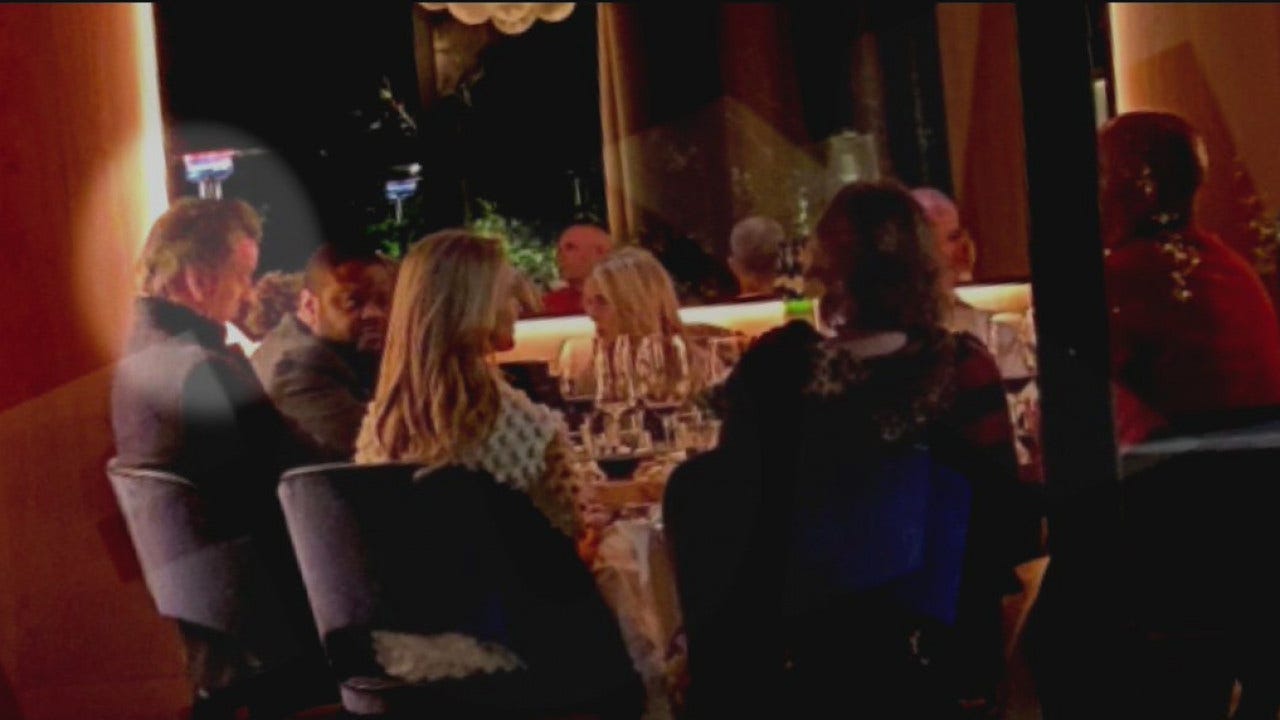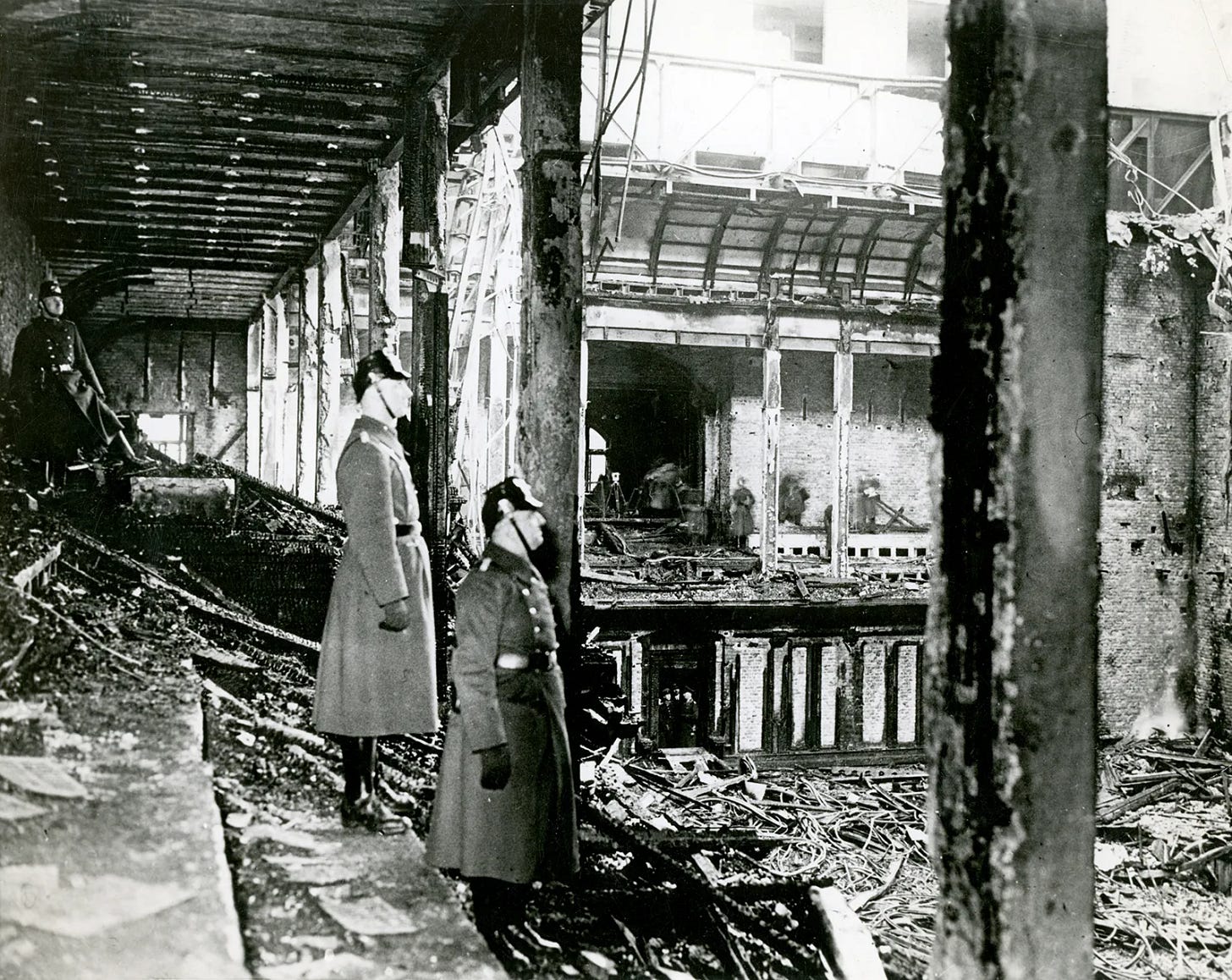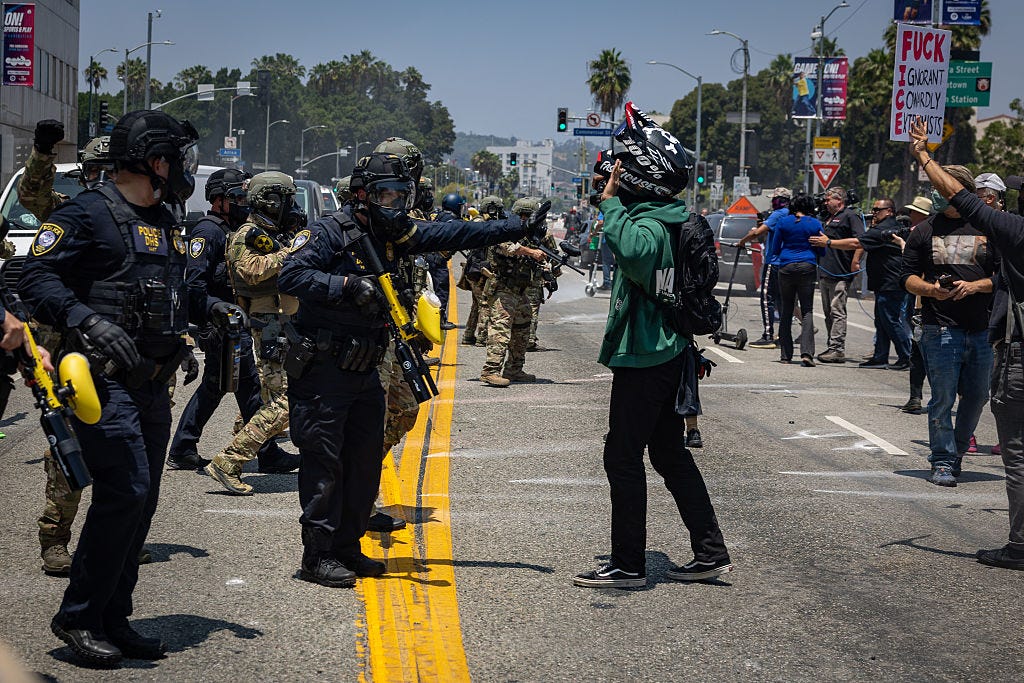What flags reveal — and what they hide
In uncertain times, symbols can be used to warn us — or control us. The challenge is knowing the difference.
There’s been a lot of talk about flags lately — especially in Los Angeles, where rioters have been seen waving flags of the very countries they’re supposedly desperate to avoid being deported to.
As Jeff Childers wrote in ☕️ Coffee & Covid 2025 🦠 yesterday:
If your homeland is a flaming trash pile worth fleeing, maybe don’t wave its flag like a tailgate banner while you riot to avoid going back. It sends mixed signals.
Mixed signals indeed.
Back in the late 1880s, when nearly half of New York City’s population was foreign-born, schools began hosting events that celebrated American symbols — especially the flag — to help children connect to their new home. An event at a free kindergarten for poor children on June 14, 1889 sparked the first Flag Day.
But what is a flag, really? And why does it matter? Flags are more than pieces of fabric. They’re shorthand for identity, values, and power. Like all symbols however, they can inspire or deceive. Some flags warn us. Others are meant to fool us.
This should come as no surprise to anyone paying attention. Three letter agencies perfected the technique of using symbology — especially the power of flags — to manipulate as much as unify. Entire 'color revolutions’ earlier this century — you may recall orange flags in Ukraine or green flags in Iran — were well known and highly-tuned tactics used to psyop populations into believing spontaneous, grassroots change was at hand when in fact, the colors and tactics were well-orchestrated.
History is replete with the use of such ‘flags.’
Red flags and false flags: warnings and distractions
In the early days of COVID, red flags were everywhere. When companies called employees “heroes” but made them buy their own PPE — that was a red flag. When public health officials flip-flopped from “masks don’t work” to “wear three masks” — that was a major red flag. When leaders broke the very rules they imposed on us — that wasn’t just a red flag, it was a flat-out betrayal.

Millions saw it happen and chose to explain it away. Or justify it because it was easier than facing the cold hard truth about standing face-to-face with deception… the kind of deception that creates a glitch in the matrix: your eyes show you one thing, but your mind has been programmed to believe another.
That’s the thing about red flags: they’re uncomfortable. They disrupt our sense of safety and that’s why we so often choose to ignore the warning signs.
False flags are a different animal altogether. They’re specifically engineered to make you look the other way.
Historically, a false flag was a military ploy: fly someone else’s flag on your ship while launching an attack to provoke a conflict. Today, it’s often a psychological tactic used to shift blame, conceal intent, or manufacture outrage.
False flags thrive in chaos. Confuse people enough, and they’re easier to manipulate. That’s the strategy: flash something urgent and emotional, and while everyone’s focused on that, make your intended move in the shadows.
A textbook example is the 1933 Reichstag Fire. Nazis blamed the communists for setting fire to the parliament building, then used the ensuing panic to suspend civil liberties and tighten their grip on power. Years later, evidence confirmed it was their own operatives who lit the match. It’s proof that those who would want to manipulate us for the sake of their own desire for power will stop at nothing to attain it.
Today, even raising the possibility of a false flag can get you labeled a conspiracy theorist, which is a convenient deflection if you’re the shadowy power wanting to continue your stealthy operation. Nevertheless, it’s imperative to question the official narrative. That’s not paranoia — it’s self-preservation.
When the riots erupted in Los Angeles this week, many wondered: Are these events spontaneous? Or are they convenient catalysts for surveillance measures, digital IDs, and military presence? Is there proof one way or another? Perhaps not yet, but it is absolutely reasonable to ask cui bono — who benefits — from the chaos.
As the violence and unrest now begins to spread across the US (Dallas, at the time of writing and No Kings Day planned nationwide for Saturday June 14), it’s important to see what’s happening as a possible red flag — or a false flag — or both. History will decide — hindsight always has the final word.
Why we miss the signs
We ignore red flags because we don’t want to wake up from a dream. We fall for false flags because we’re afraid we’re already living in a nightmare. Both grow in the same environment: uncertainty, fatigue, and emotional overload.
Since COVID, our world has been filled with all three. We’re tired, isolated, and drowning in information. In that state, people stop asking, “Is this true?” and believe what they’re programmed to believe. Red flags get dismissed because they’re inconvenient. False flags succeed because they’re compelling.
Flag Day 2025 will come and go, as it always does. But this year, as the event coincides with the mass mobilization of No Kings, don’t miss the opportunity to ask yourself some important questions:
What narratives am I accepting without proof?
Who gains from the symbols I’ve been told to revere?
What red flags am I still excusing?
What false flags have I mistaken for truth?
Red flags demand we notice betrayal. False flags mislead us into blaming the wrong enemy. In a chaotic world, we owe it to ourselves, and each other, to stay sharp and determine the difference. Check the facts. Question the motives. Don’t let exhaustion dull your judgment.
And may God bless America.





My absolute favorite thing was seeing the map of where they were going to have a No Kings event. It included some sites in Sweden, Canada, and the UK where they actually *do* have a king.
You can't make this up.
In the words of John Popper from Blues Traveller,
"It doesn't matter what I say
So long as I sing with inflection"
Flag is a very interesting word. There are different meanings; an noun, as in a Canadian "flag" or maybe a verb like "flag" down a cab. But if we talk about "red" flags and "false" flags, the meanings are being stretched from a fabric symbol flapping in the breeze to a whole new level that includes unknown and dangerous implications. By adding the adjectives "red" and "false" we're changing the traditional definition and use of the word.
That's fine, except that the media has weaponized language itself, sowing confusion and misdirection as it suits their purpose. Lawyers and NGO's like the WHO and UN use it to lure member nations into their globalist "sustainable goals". Lying and deception is imbedded in advertising, marketing, politics, everything... and language is the handy tool. AI has added another level of sophistication to make it even more convincing.
Some words are potent triggers of emotion such as anti vaxxer or conspiracy theorist, and have been used to effectively discredit and demonize the naysayers. Propaganda uses these kinds of words and keeps repeating them, forming a kind of false perception, false narrative, false consensus. The globalists seem to be using flags to divide and conquer in the new modern way, where ideology is pitted against reality and truth.
Maybe we need to get behind a symbol like a flag to show where we stand and what we believe, but we need to remember it's a tool as well as a symbol, and could be something being used against us.